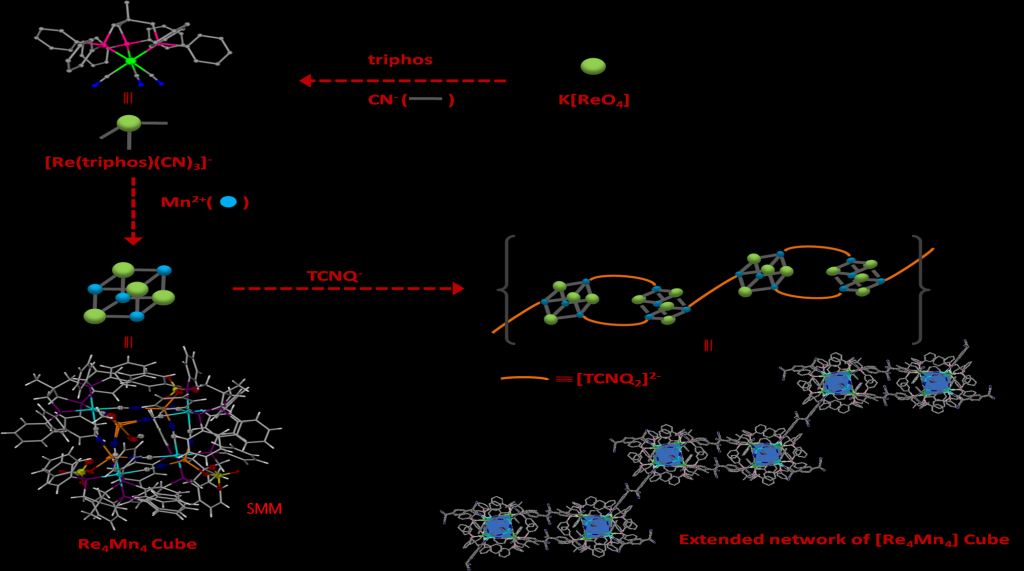Cyanide as a Bridging Ligand
An important bridging group in inorganic chemistry is the cyanide ion, which has been widely used as a linker to prepare coordination compounds. The cyanide linkage provides a short (~5.0 Å), efficient pathway for both electronic and magnetic communication between metal ions, which has been utilized in several applications including single molecule magnetism (SMM) and electrochemical sensors. In fact, the use of cyanide in chemistry goes back to the 18th century when the German artist Diesbach accidentally discovered the mixed-valent iron cyanide material FeIII4[FeII(CN)6]3•14H2O, which later became known as Prussian blue.
 The compound was structurally characterized by Ludi et al., many years ago and was found to consist of a 3D network of Fe(II) and Fe(III) ions connected to each other through the cyanide linker in a face centered cubic arrangement with one fourth defects, could simply be prepared by reacting K4Fe(II)(CN)6 with Fe(III)Cl3 in aqueous solution. The compound exhibits usual paramagnetic behavior and magnetic ordering at a relatively high temperature, 5.6 K, due to electronic delocalization. This finding led to the preparation of various bimetallic ‘Prussian Blue’ derivatives, which exhibit spontaneous magnetization at high temperatures (~376 K).
The compound was structurally characterized by Ludi et al., many years ago and was found to consist of a 3D network of Fe(II) and Fe(III) ions connected to each other through the cyanide linker in a face centered cubic arrangement with one fourth defects, could simply be prepared by reacting K4Fe(II)(CN)6 with Fe(III)Cl3 in aqueous solution. The compound exhibits usual paramagnetic behavior and magnetic ordering at a relatively high temperature, 5.6 K, due to electronic delocalization. This finding led to the preparation of various bimetallic ‘Prussian Blue’ derivatives, which exhibit spontaneous magnetization at high temperatures (~376 K).

Building-block approach has widely been used in cyanide chemistry by introducing secondary ligands. The aim is mainly to obtain molecules and extended frameworks with desired geometries and functional groups via a step-by-step synthetic approach. An example is provided here to make a one dimensional chain incorporating cubic SMMs.
